Step-by-Step Guide to Adding Custom Ringtones on iPhone
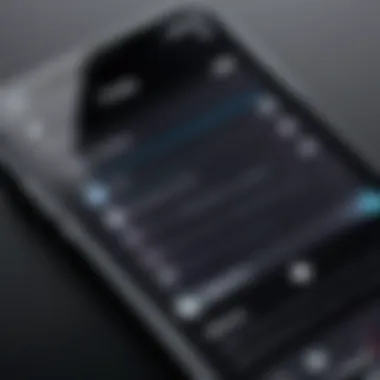
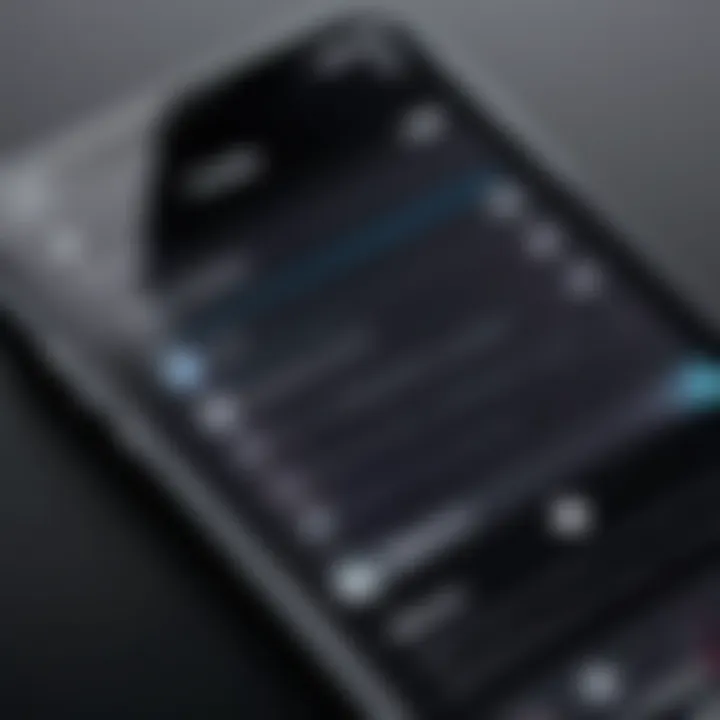
Intro
Personalizing your iPhone can transform it from merely a communication device into a reflection of your unique style. One way to achieve this customization is through custom ringtones. Instead of settling for the default sounds, why not tailor your ringtone to suit your mood or even the occasion? Whether it's a song that stirs memories or a quirky sound byte that makes you smile, adding custom ringtones is an engaging way to express yourself. This guide will take you through the nitty-gritty of adding custom ringtones on your iPhone, focusing on utilizing iTunes and GarageBand. As we unravel the process, you'll gain insights into potential hiccups and their solutions. Let's dive into the details that will empower you to give your iPhone the personal touch it deserves.
Key Features
When considering custom ringtones, it’s essential to understand what makes these personalized sounds stand out. Here are some key aspects:
- Variety of Sources: You can create ringtones from various audio files, including songs you already enjoy or recordings you’ve made yourself. This flexibility allows for a plethora of options.
- Easy Integration: Apple provides user-friendly tools like iTunes and GarageBand that facilitate seamless integration of custom ringtones with your device. This makes the process accessible even if you have limited tech skills.
- High Quality: Custom ringtones can be crafted to high standards, ensuring that the sound is crisp and clear, enhancing your listening experience.
"With a bit of creativity, your ringtone can tell a story—your story. That's the beauty of customization!"
With these features in mind, you’re not just adding sounds to your phone but crafting a personal audio identity that defines your interaction with the world.
Tools You’ll Need
Before jumping into the methods, it’s important to gather the necessary tools. Here’s a quick rundown:
- iTunes: This is the go-to app for most iPhone users looking to add ringtones. Ensure you have the latest version installed on your computer.
- GarageBand: If you prefer a more hands-on approach to create your custom tones, this app can be an excellent choice. It’s free for iPhone users and offers a wide array of sound editing tools.
- Audio Files: Have your chosen audio files ready. They can be in various formats like MP3 or M4A, but ensure they fit within the ringtone’s duration limits.
Understanding these tools will set the foundation for your ringtone journey.
Methods to Add Custom Ringtones
Now that you are equipped, let’s explore the methodologies available to you. The two most common avenues are through iTunes and GarageBand.
Using iTunes
- Select Your Song: Open iTunes and choose the music you want to convert into a ringtone.
- Clip the Audio: Right-click on the song and select "Song Info." Go to the Options tab, and set the start and stop times (up to 30 seconds).
- Create AAC Version: With the selected portion highlighted, go to the File menu, then Convert, and choose "Create AAC Version."
- Locate the File: Right-click the new file and select "Show in Finder" (or Windows Explorer). Change the file extension from .m4a to .m4r.
- Import to iTunes: Drag the .m4r file back to iTunes under Tones.
- Sync with iPhone: Connect your iPhone and sync your tones. Your newly created ringtone will appear in your device’s settings.
Using GarageBand
- Create a New Project: Open GarageBand on your iPhone and select an audio project.
- Import Your Sound: Tap on the loop icon to import your chosen audio file.
- Edit the Clip: Use the editing options to trim or adjust the sound to your liking.
- Export as Ringtone: Once you’re satisfied, tap on the Export button and select "Ringtone." Name it and export it.
- Set as Default: After exporting, you'll have the option to set it directly as your default ringtone or one for individual contacts.
By utilizing these methods, you'll find the process is not only straightforward but also quite gratifying. The joy of hearing your specialized sounds every time your phone rings cannot be overstated.
Troubleshooting Common Issues
Should you encounter some bumps along the way, here are a few frequent problems and their fixes:
- Ringtone Not Showing Up: Ensure the song is properly converted to .m4r and synced. Sometimes a quick restart of iTunes or the iPhone helps.
- File Too Long: Remember that the maximum limit for ringtones is 30 seconds. If your file exceeds this, you’ll need to trim it.
- Connectivity Problems: Make sure your cable is working correctly during sync. A faulty connection can cause files not to transfer.
Exploring custom ringtones allows for the personal touch every iPhone user craves. Whether you resonate more with the simplicity of iTunes or the creative flair of GarageBand, the power to customize is at your fingertips. Get ready to elevate your ringtone game!
Understanding iPhone Ringtones
When it comes to personalizing your iPhone, ringtones are one of the first avenues many users explore. Understanding the significance of ringtones goes beyond just selecting an audio clip; it’s about injecting a bit of your personality into your device. In this day and age, where smartphones are as common as carry wallets, standing out is essential. Custom ringtones not only make your phone experience unique but also enrich the way you interact with your device.
One might wonder why this customization is so valued. Think about it: every time your phone rings, there’s an opportunity to express who you are, what music you enjoy, or even a memorable moment brought back by a particular tune. Ringtones can evoke feelings and remind us of our favorite times, songs, or people.
The Value of Customization
The concept of customization is rooted in the idea that individuals want their cravings and personalities reflected in every aspect of their lives, including their phones. The act of customizing allows users to feel a sense of ownership over their devices. With thousands of pre-set ringtones available, it can feel like everyone is using the same sounds, which can become repetitive. Choosing or creating a custom ringtone transcends mere sound; it becomes a personal statement.
Whether it’s a catchy tune from your favorite artist or a snippet from a movie that resonates with you, this small touch allows your device to reflect who you are. There’s a certain pride that comes with having a ringtone unique to you. Plus, when your phone rings in a crowded place, it’s nice to be able to distinguish your phone from others at a glance.
Default vs. Custom Ringtones
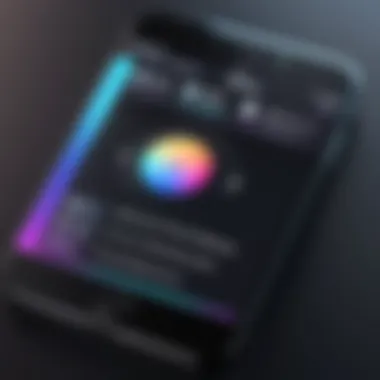
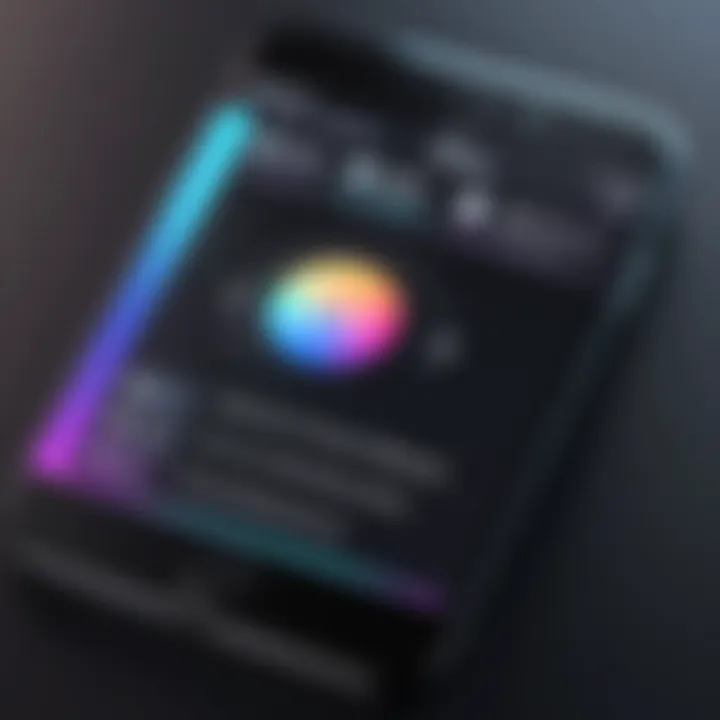
While default ringtones serve their purpose, they often lack the personal touch that many users crave. Most iPhones come pre-loaded with a selection of standard tones ranging from simple beeps to melodious ringers. These tones have their charm, but they can feel a bit generic over time. Hearing the same tone repeatedly, especially in social settings, can lead to confusion; everyone seems to have the same alerts.
Custom ringtones bring a refreshing twist to this scenario. Can you imagine hearing the opening notes of your all-time favorite song when your phone rings? It sharpens your focus, and you become eager to answer the call. The difference is tangible and resonant. Creating or selecting your own ringtones can also be seen as a form of artistic expression. You have the freedom to choose your sound, whether it be a classic rock anthem, a vibrant pop hit, or a nostalgic childhood favorite.
Methods for Adding Custom Ringtones
In the digital age, everyone loves a bit of personal flair, especially when it comes to the sounds that announce our calls. Custom ringtones not only reflect our tastes but also set our devices apart in a crowd filled with the same old default sounds. Knowing how to add personalized tones is a nifty trick that can enhance your user experience dramatically. Methods for Adding Custom Ringtones will explore several tried-and-true techniques to tailor your iPhone’s soundscape.
Using iTunes for Ringtones
Preparing Your Music Files
One of the first steps in crafting your own ringtone involves the preparation of music files. It’s not merely about the song itself but about how to effectively modify it for your needs. Ringtones must be in formats like AAC, which is why it’s essential to handle your files with care. Typically, this means turning your favorite tracks into shorter segments. This focus on creation not only saves space but also keeps your phone’s library organized.
An additional point to consider is how iTunes simplifies the file preparation process. Its built-in editor allows users to trim tracks to the desired length, ensuring you get that perfect snippet without needing complicated software. Personalization becomes a seamless exercise here.
Creating the Ringtone File
Once your music files are properly prepped, it’s time to create the ringtone file. This step is pivotal because it transforms a standard audio file into a snippet that your iPhone recognises as a ringtone. Here, the key characteristic of this process is its reliance on file extensions. Saved as .m4r, these ringtone files can now be directly associated with your device, making it easier than ever to switch things up.
Moreover, the beauty of creating your ringtone through iTunes lies in its user-friendly interface. Many people consider it an accessible option, especially for those not keen on delving into advanced sound-editing software. It's straightforward but effective.
Syncing with iPhone
Now comes the vital step of syncing with your iPhone. This part is the bridge that brings your newly created ringtones into your daily communication toolkit. It’s essential to remember that syncing ensures that not only do you have the ringtones on the phone, but they are also ready to go when someone calls.
The syncing process via iTunes can initially seem daunting but is quite manageable with a bit of patience. You connect your device, select it in iTunes, and properly navigate through the ‘Ringtones’ section. Once you press sync, your custom tones are set to enhance your incoming calls. It’s a reliable method, although occasionally, users face challenges—like having to redo the process if syncing fails or if the tones default back to standard ones. Still, this method remains a solid favorite among many.
Utilizing GarageBand
Installing GarageBand on iPhone
If iTunes isn't your style, maybe GarageBand can better suit your creativity vibe. Installing GarageBand on iPhone allows users to get their hands dirty with a more hands-on approach to creating ringtones. When you install it, you gain access to a wide variety of features that can enhance audio manipulation.
Many appreciate GarageBand for its robust functionality; it’s more than just a ringtone creator. It’s a music studio in your pocket. This level of capability makes it a desirable option for those looking to craft something truly unique, although it might take a bit longer for newcomers to learn the ropes.
Importing Your Music
Once GarageBand is running, the next step revolves around importing your music. This is the moment when songs become the canvas for your ringtone masterpiece. GarageBand supports a plethora of audio formats, which gives you flexibility with your current library.
One significant advantage of this method is the ability to manipulate and layer sounds creatively. Users can cut, copy, and adjust pieces until they're completely satisfied with how it sounds—a huge plus. However, be aware that not all tracks may import seamlessly, which might lead to frustration when first setting things up.
Exporting as a Ringtone
At long last, you reach the step of exporting as a ringtone. This final act of creation liberates your crafted sound and makes it your choice whenever that phone buzzes to life. GarageBand makes exporting easy, helping users save their songs in the correct format right away.
However, it’s through this exporting process that many discover the app’s unique strength. Not only can you use snippets of songs, but you can also combine various audio clips, letting creativity fly. Yet, it is slightly more involved than simply syncing tracks, thus requiring patience and a bit of practice to master.
Using Third-Party Apps
Exploring Popular Apps
If you're curious about alternative options, exploring popular apps is a worthwhile consideration. These specially designed apps offer features tailored for ringtone creation, which can sometimes be more efficient than both iTunes and GarageBand. Favorites like Ringtone Maker or Zedge come packed with tools right within your smartphone, offering you more direct control.
These third-party choices come with their perks—such as user-friendly interfaces—making it easy for users who find iTunes or GarageBand complex. However, you might need to take note of app limitations and potential in-app purchases that can affect your ringtone-making process.
Steps to Follow for Customization
Lastly, steps to follow for customization can differ significantly depending on the application chosen. The generic process usually involves selecting a song, trimming it, and setting it as a ringtone.
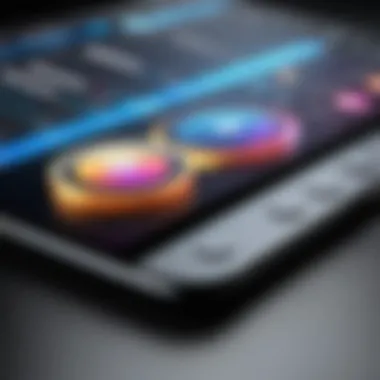
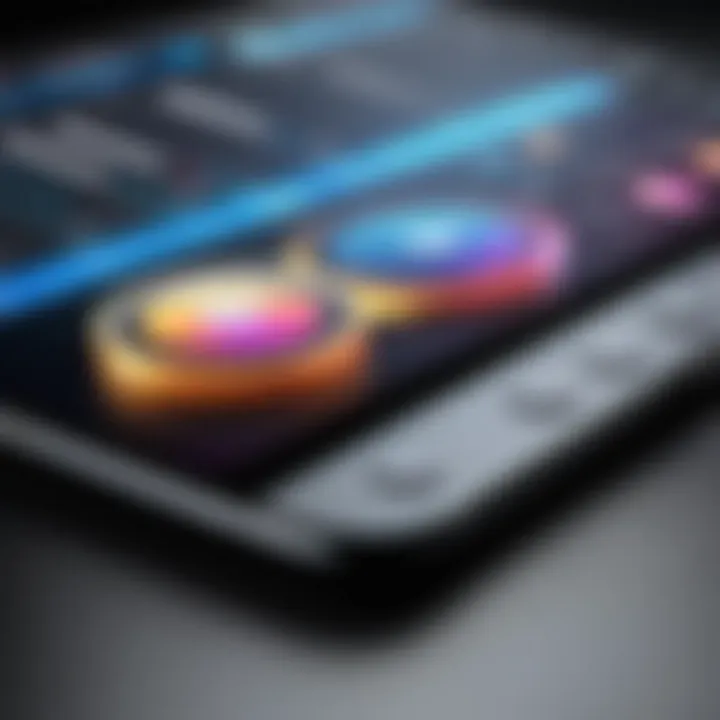
These applications prioritize simplicity, letting users bypass complicated syncing procedures. This lightweight process can be a godsend when you're pressed for time or when looking for quick changes without much fuss. But do keep an eye on the quality, as sometimes third-party apps can compress audio too much, impacting the final sound of your ringtones.
Overall, whether you lean towards iTunes, GarageBand, or the plethora of third-party apps available, customizing your iPhone ringtones is within reach. Each method has its advantages and quirks, allowing you to choose the one that best compliments your creative style.
Preparing Your Files
When it comes to adding custom ringtones to your iPhone, prepping your files is like laying a solid foundation before building a house. If you want your custom sounds to shine on your device, you gotta make sure they're ready for the ride. This section delves into the two main aspects of preparation: choosing the right audio format and trimming audio as needed.
Choosing the Right Audio Format
Supported Formats for iPhone
One of the first steps in preparing your custom ringtones is understanding which audio formats your iPhone supports. Generally, the most popular formats include AAC, MP3, and M4A. These formats are widely accepted and, more importantly, maintain a good balance between quality and file size.
The ability to use these formats means you can work with a vast library of music without the need to jump through hoops. M4R, a specific format for ringtones, is particularly beneficial because it is tailored for Apple devices.
This is how it works: when you convert a track to M4R, it will fit seamlessly into your iPhone without any quality loss. However, keep in mind that some music files might not convert cleanly due to DRM (Digital Rights Management) restrictions. So, if you find a song locked down, you may need to look for alternative sources or consider DRM removal options, which can be a bit of a hassle.
Converting Files as Necessary
Sometimes you might run across files in formats that your iPhone doesn't recognize. This is where converting files becomes important. The main characteristic of file conversion is its ability to transform your audio files into a format that's acceptable for your iPhone.
While there are many free tools out there for this task, using a reputable program like Audacity or iTunes simplifies the process considerably. These options allow batch conversions, saving time if you have multiple files to convert.
But you gotta watch out—if you over-compress files during the conversion process, you might glimpse a dip in audio quality. You want your ringtones to sound crisp, not like they were recorded on an old tape recorder. Stick to high-quality settings when making those changes.
Trimming Audio to Fit
Identifying Desired Sections
Once you have your audio files in the right format, it’s time to trim them to fit. Why? Simple: a good ringtone should have that punchy start that captures your attention immediately. Identifying desired sections means selecting the part of the song that best represents it—usually, this is a catchy chorus or a recognizable intro.
Choosing the right segment can elevate the ringtone from just a noise to something that brings a smile every time your phone rings. However, this can demand a bit of patience as you listen closely to pick out the exact moments that resonate with you. It might be tempting to pick a whole song, but trust me, shorter is often sweeter in the world of ringtones.
Using Editing Tools
Now that you know which sections to snip, using editing tools comes into play. Programs like GarageBand or even built-in tools in your preferred music software can assist in cutting down your tracks easily. Each of these tools has its unique features; for example, GarageBand offers a user-friendly interface along with robust editing capabilities.
Both options let you listen as you edit, which helps ensure that you’re trimming off what’s necessary and keeping the heart of the tune intact. The good news is that these tools tend to be fairly straightforward, even if you’re not tech-savvy. That means you can hop straight into the fun stuff without getting bogged down in complicated instructions.
In the realm of ringtones, a good edit makes all the difference. It's about finding fluidity in the sound that reflects your personal vibe.
By meticulously preparing your audio files and selecting the right formats, you'll set the stage for an effortless transfer and a satisfying experience every time your phone rings. Remember that great ringtones don’t just happen—some effort goes into crafting that perfect sound. This is what makes all the difference between an ordinary ringtone and one that truly stands out.
Dealing with Common Issues
When personalizing your iPhone with custom ringtones, you might run into a few bumps in the road. Understanding how to effectively tackle these hurdles is crucial, not just to save time but also to ensure that your device reflects your unique sound. This section sheds light on two primary issues: synchronization troubles and the limitations on how many ringtones you can have. By grasping these concepts, you’ll find it easier to navigate the customization process.
Troubleshooting Sync Issues
Sync problems can be quite frustrating, often leading to your carefully crafted ringtones not making it to your iPhone. The culprit could range from software glitches to incorrect settings on your iTunes application. Here are some important steps you can take to troubleshoot and resolve these pesky sync issues:
- Check Connections: Ensure that your iPhone is properly connected to your computer. A loose cable can be a sneaky reason for syncing failures.
- Software Updates: Keep your iPhone and iTunes updated to the latest versions. Running older software can lead to compatibility issues.
- Syncing Settings: Navigate to iTunes and go into the device settings. Make sure that the ringtones you’ve added are selected to sync.
- Restart Everything: Sometimes, restarting your device and iTunes can clear out temporary issues that block sync operations. It’s almost like giving everything a clean slate.
If those steps don't help, you might also want to consider removing existing ringtones before re-adding your new ones. Some users have noted that this clears up syncing complications.
"Problems with syncing can make you feel like you're chasing your tail. Often, it's a simple fix, but you have to get creative!"
Understanding Ringtone Limits
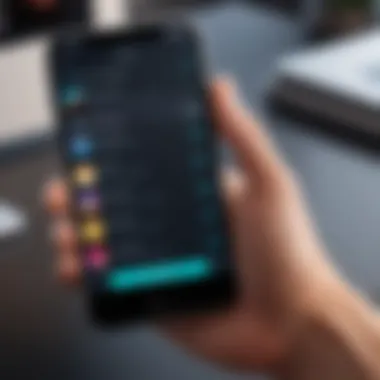
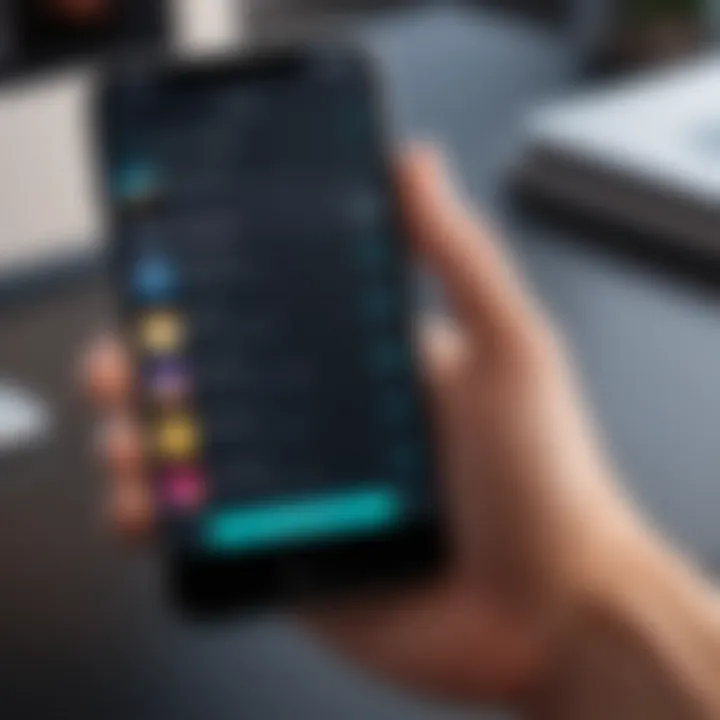
Every iPhone has its quirks, and one of those quirks includes limits on ringtones. Apple's system typically allows a user to have 30 custom ringtones at a time. While that might seem like a decent number for most, it can be a hurdle for those who like to switch things up often. Here are some considerations related to ringtone limits:
- Storage Space: Remember that your iPhone’s storage is finite. If you’re at capacity, you might have to delete or replace some ringtones to make room for new ones.
- Ringtone Management: Being selective about your ringtone choices can save you from constant deletions and re-additions. Consider organizing them by themes or moods for easy access.
- Audio Quality: Keep in mind that any audio file you choose should be under the 40-second limit to qualify as a ringtone. Otherwise, that catchy chorus you love might just get cut off.
By understanding these limits and managing your selections wisely, you can ensure that your ringtone game stays strong without any unwelcome surprises.
Setting Your Custom Ringtone
Setting your custom ringtone is not just about catching a unique sound when your phone rings; it is a reflection of your personal style and preference. This section explores the significance of this feature, which allows you to differentiate your calls from a cacophony of default tones.
With so many options available, the right ringtone can energize your day or evoke nostalgic memories at a moment’s notice. Think of that catchy melody that makes you smile every time it plays. Custom ringtones can be a conversation starter, a way to express your personality, or even a means to convey a dramatic flair when receiving calls. By learning how to set a custom ringtone, you ensure that every ringing moment is a chance to experience something uniquely you.
Navigating Settings
Navigating the settings to set a custom ringtone is the first key step in personalizing your iPhone's auditory output. It may seem trivial, but mastering these settings can enhance your daily interactions with your device. Adjusting sound settings is quite straightforward, making for a seamless user experience.
Accessing Sound Settings
Accessing Sound Settings is where the customization journey starts. To find these settings, you typically head to the main Settings menu on your iPhone and select Sounds & Haptics. This section allows you to fine-tune notifications, ringer, and alert tones. The key characteristic of this feature is its user-friendly interface which lets you see all your sound options in one tidy package. This feature becomes particularly beneficial for those who like quick access to their customization options.
One unique feature of accessing sound settings is how it categorizes different audio notifications distinctly. This allows you to have total control over your ringing experience, ensuring that personal calls carry a different tone from your alerts. However, while it is intuitive, some users may find it overwhelming initially, especially if they are not familiar with iPhone menus.
Selecting Your New Ringtone
Selecting your new ringtone is where the magic really happens. After navigating to the Sounds & Haptics settings, you can choose your preferred ringtone from a list of options or add your custom tones. This component enriches the overall user experience because it adds a layer of personalization that reflects your identity.
The key characteristic of selecting your ringtone is the variety of choices you have, whether it be your favorite song, a cinematic sound, or a classic iPhone tone. This option empowers you to elevate your phone from merely functional to representative of your personal style.
A unique feature to note is the ability to set different ringtones for different contacts. This ensures that you can instantly identify who is calling just by the ringtone alone. The downside, however, is that if you have a large contact list, managing all these unique tones might become a bit unwieldy. Still, for those who savor personalization, it's a worthy endeavor.
"Customization is not just a luxury but an expression of who we are. With each ringtone, we tell a story."
Best Practices for Ringtone Management
When it comes to managing ringtones on your iPhone, there’s more to it than just picking a tune you like. The right approach to ringtone management can enhance your device’s efficiency, ensure easier access to your favorites, and facilitate a better overall user experience.
Organizing Your Library
Before you go about selecting ringtones and setting them, getting your library organized might save a headache or two down the line. Think of it this way: if your ringtones are scattered all over the place, finding that perfect sound can feel like looking for a needle in a haystack. Not only does organization provide clarity, but it also allows you to quickly navigate through your options when that phone buzzes.
Here are some tips for organizing your ringtone library effectively:
- Categorize by Mood or Occasion: Group ringtones according to themes such as energetic, calming, or even by events like birthdays or holidays. That way, when different occasions arise, you’ll know exactly where to look.
- Set Up Folders: If you’re using a computer, folders can be a lifesaver for ringtone organization. Create separate folders for different artists or genres. For example, put upbeat tracks in one folder and relaxing melodies in another.
- Label Your Files Clearly: Rename ringtone files with descriptive titles. "Party Anthem" or "Morning Calm" say more about their sound than just a file number.
- Regular Audits: Just like cleaning out a closet, it’s helpful to periodically review your ringtone library. Delete those tunes you haven’t used in ages to make space for newer sounds that you’ll actually enjoy.
Keeping your library tidy not only helps you know exactly what you have but also allows you to showcase your personal style more effectively. Moreover, if you ever decide to share ringtones with friends, a well-organized library can make connecting and sharing a breeze.
"Nothing is as tedious as searching for something when you’ve got no idea where it is."
Ultimately, managing your ringtones with care reflects more than just aesthetics; it's about curating an auditory experience that resonates with your lifestyle. When you handle your ringtones thoughtfully, you create meaningful connections—every incoming call or text gets a little more personal.
Being strategic about how you manage your ringtones can elevate your tech-savvy prowess by presenting a seamless way to enjoy the specific sounds that define your day-to-day interactions.
Remember, quality over quantity when it comes to your ringtone choices leads to a more enjoyable experience, making sure that every ring counts.
Ending
When it comes to customizing your iPhone, the ability to add custom ringtones is more than just a fun feature. It marks a step towards making your device uniquely yours. As explored in the above sections, there are multiple methods to achieve this goal—using iTunes, GarageBand, or even third-party apps. Each method offers distinct advantages and caters to different preferences and technical abilities. The key point is not just adding a ringing sound when your phone buzzes; it’s about imbuing your device with a touch of personal identity.
In the recap of core steps, we help users connect with those fundamental actions, ensuring a smooth execution in their customization journey. Custom ringtones can reflect individual tastes, moods, or even serve as practical alerts for important calls. By understanding the nuances of sound, format, and file management, users can tailor their auditory experiences to be as specific or versatile as they desire.
Ultimately, adding custom ringtones is about empowerment and exploration. Users should feel encouraged to experiment with different sounds and methods, without fear of error. There’s joy in discovering unique tones that resonate with personal sentiments, and it leads to a greater appreciation of the technology at hand. The more one dives into the customization options, the more they can truly enjoy the device they carry everywhere.
"Your phone should feel like an extension of your personality, not just a communication tool. Custom ringtones bridge that gap."
Thus, take what you've learned here and start experimenting. Your iPhone can be a canvas, and the sounds that accompany your daily life can be as diverse as you are.



